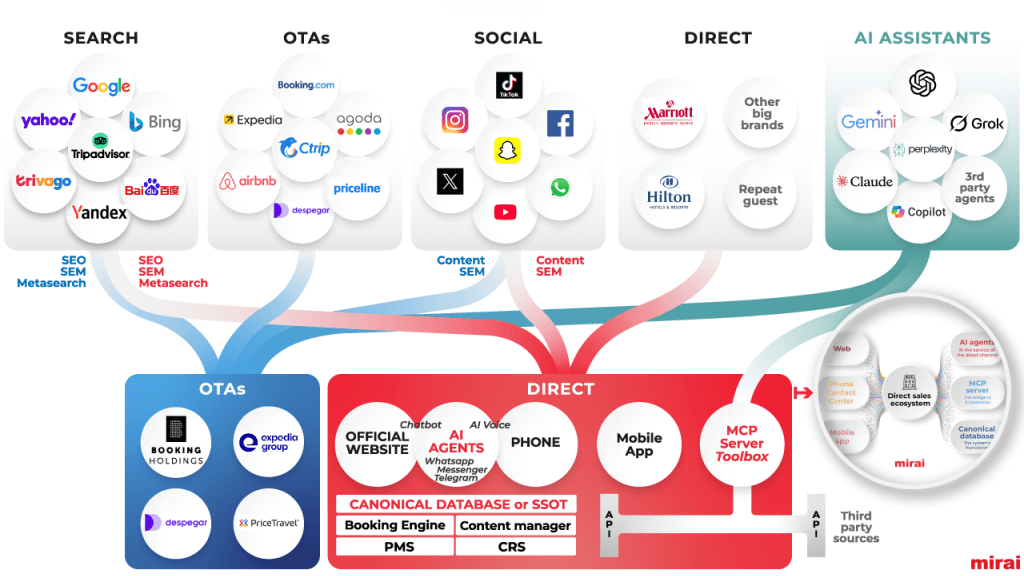
The summer season is a pivotal time for hotels, often bringing a surge in bookings and bustling activity. As the warmer months come to a close, it’s essential to take a step back and critically evaluate your marketing efforts.
NB: This is an article from Travelboom Marketing
Subscribe to our weekly newsletter and stay up to date
A comprehensive review helps identify successes and opportunities, allowing you to refine your strategies and enhance your return on investment in the future.
To guide you through the process of evaluating your summer marketing efforts, we’ve developed a detailed checklist specifically designed for hoteliers and hotel marketers. This tool will help you systematically assess the effectiveness of your summer marketing campaigns, uncover insights into your performance, and lay the groundwork for an even more successful summer season next year.
1. Review Your Marketing Performance
# Analyzing Key Metrics
Seasonal Performance
- Bookings and Occupancy Rate
Examine your summer booking data to determine if you hit your targets. Compare this season’s occupancy rates with the same period in past years to spot trends and assess your performance. If your rates are up, it’s a sign that your marketing is hitting the mark!
Take it one step further and measure how your occupancy stacks up against industry averages, which helps you understand if you’re keeping pace with your competitors and the market as a whole. Industry research such as the Smith Travel Research, or STR Report, provides detailed information on competitor hotel performance, including occupancy rates, ADR and RevPAR. In addition, OTAs often provide information about competitor pricing, availability, and sometimes reviews, which can offer indirect insights into competitor performance and market positioning.
- Website Traffic
- Track Traffic Trends: Use tools like Google Analytics to see how your website traffic changed over the summer. Look for patterns, such as spikes during certain promotions or area events, as well as drops during quiet periods.
- Understand Where Visitors Come From: Find out if visitors found your website through search engines, social media, or paid ads. This insight can help you fine-tune where to focus your marketing efforts.
- Explore User Behavior: Review how visitors interacted with your site. Did they stick around or bounce quickly? Understanding user behavior can guide improvements to keep people engaged.
- Measure Conversions: Look at how well your hotel website converted visitors into bookings. This will tell you how effective your website was at turning interest into action. As a rule of thumb, any conversion rate below 1% is a red flag. Looking at conversion rate by channel will provide a more accurate view of your summer performance.
- Social Media Performance
- Bookings: Did your social media efforts translate into increased bookings?
- Brand Awareness: Were you successful in raising awareness about your hotel?
- Engagement: Did you enhance interaction with your audience?
- Customer Service: Did you improve your customer service through social media?
- Engagement Rate: Look at likes, shares, comments, and overall engagement.
- Reach and Impressions: Measure how many people saw your posts and how often.
- Follower Growth: Track changes in the number of followers on each platform.
- Click-Through Rate: Analyze how many users clicked on links to your website.
- Conversion Rate: Measure how many of those clicks resulted in bookings or inquiries.
- Sentiment: Evaluate the tone of comments and messages to understand perception.
- Top-Performing Posts: Identify which types of content performed best.
- Best Times to Post: Determine when your audience is most active and engaged.
- Hashtag Performance: Analyze which hashtags drove the most engagement.
- Campaign Effectiveness: Assess the performance of any campaigns
- ROI: Calculate the return on investment for any paid social media advertising.
- Email Campaign Success
- Review Open Rates: How many people opened your summer emails? A low open rate may mean you need to adjust your subject line or timing, or it could signal something worse.
- Analyze Click-Through Rates: Look at how many recipients clicked on your links. Higher click-through rates mean your email content and calls-to-action were compelling.
- Check Conversions: How many people took action after reading your emails? Did your marketing emails generate revenue if that was your goal? This tells you how effective your campaigns were at driving results.




